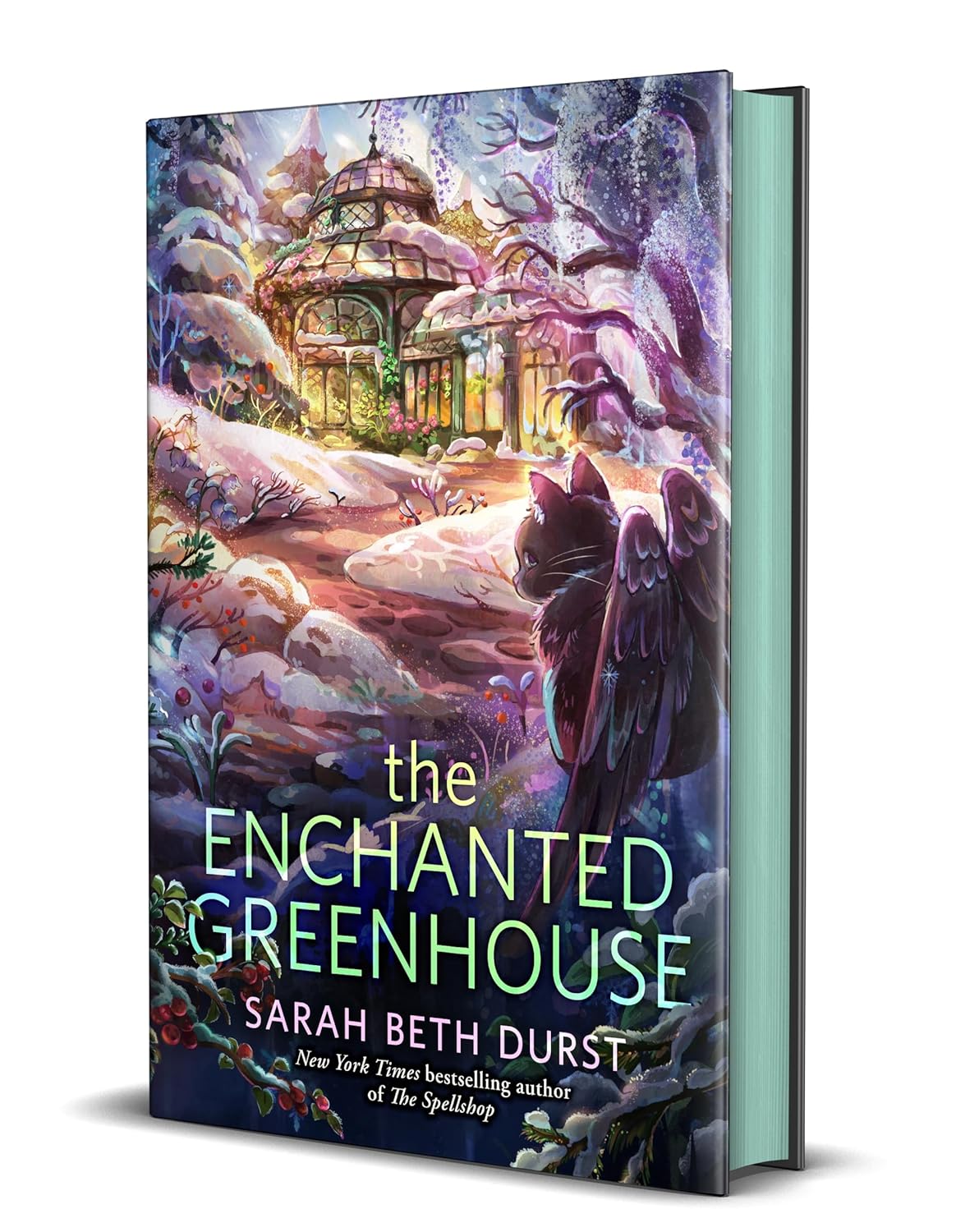
Some books feel like a mug of hot tea on a cold evening, comforting, fragrant, and full of warmth. Sarah Beth Durst’s The Enchanted Greenhouse is one of those rare stories. Blending whimsical magic with heartfelt themes of forgiveness, second chances, and belonging, this cozy fantasy takes readers on a journey to a faraway island where the greenhouses sing, roses talk, and love quietly blossoms.
At its heart is Terlu Perna, a young woman whose loneliness once led her to break the law. She cast a forbidden spell to create a sentient spider plant, and for her transgression she was punished by being turned into a wooden statue and forgotten in the Great Library of Alyssium. But one day, Terlu awakens in winter on a mysterious island filled with hundreds of magical greenhouses. Hungry and cold, she meets Yarrow, a gruff but tenderhearted gardener who offers her food, shelter, and kindness. What begins as simple survival soon grows into something far greater: a mission to save the island’s failing magic and, in the process, to discover new love and purpose.
Durst’s writing sparkles with imagination. Readers will delight in whimsical details like tiny pollinating dragons, a winged cat, and greenhouses bursting with wonders, from singing flowers to talking plants with quirky personalities. These enchanted details create an atmosphere that is equal parts playful and comforting, making the world of the novel feel alive and inviting.
The characters shine just as brightly as the setting. Terlu is a sympathetic heroine, full of longing yet resilient, and her journey of self-discovery is tenderly drawn. Yarrow, the gardener, may appear brusque at first, but beneath the surface he is a gentle, generous soul whose quiet care for Terlu makes their growing relationship a joy to follow. Their romance is subtle yet deeply satisfying, a slow bloom that feels as natural as the island’s magic.
Thematically, The Enchanted Greenhouse explores loneliness, forgiveness, and the courage to embrace second chances. The story acknowledges the many shades of solitude from painful isolation to peaceful solitude while showing how connection, trust, and community can transform lives. This emotional depth balances beautifully with the cozy, magical tone, leaving the reader both comforted and inspired.
If there is one critique, it is that the pacing sometimes lingers in description, and the talking plants may feel overwhelming for readers who prefer more human-driven interactions. Still, for those who enjoy the charm of quirky, magical companions, these elements only enhance the book’s whimsical appeal.
Ultimately, The Enchanted Greenhouse is a story about love in all its forms: romantic, communal, and self-acceptance. With its vivid imagery, engaging characters, and hopeful message, it is the kind of book that feels like a warm hug on a chilly day. Fans of cozy fantasy, magical adventures, and heartfelt character growth will find this novel a delightful addition to their shelves.


